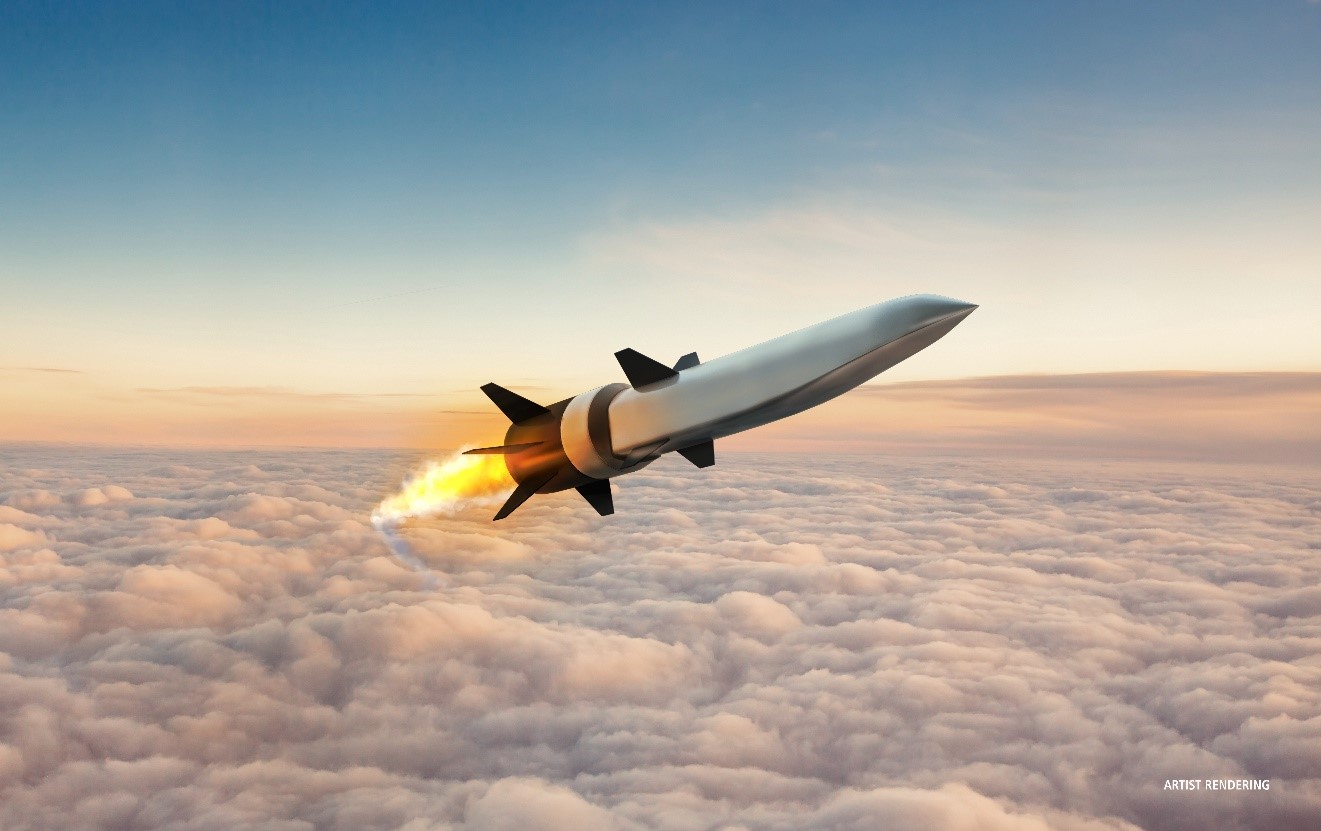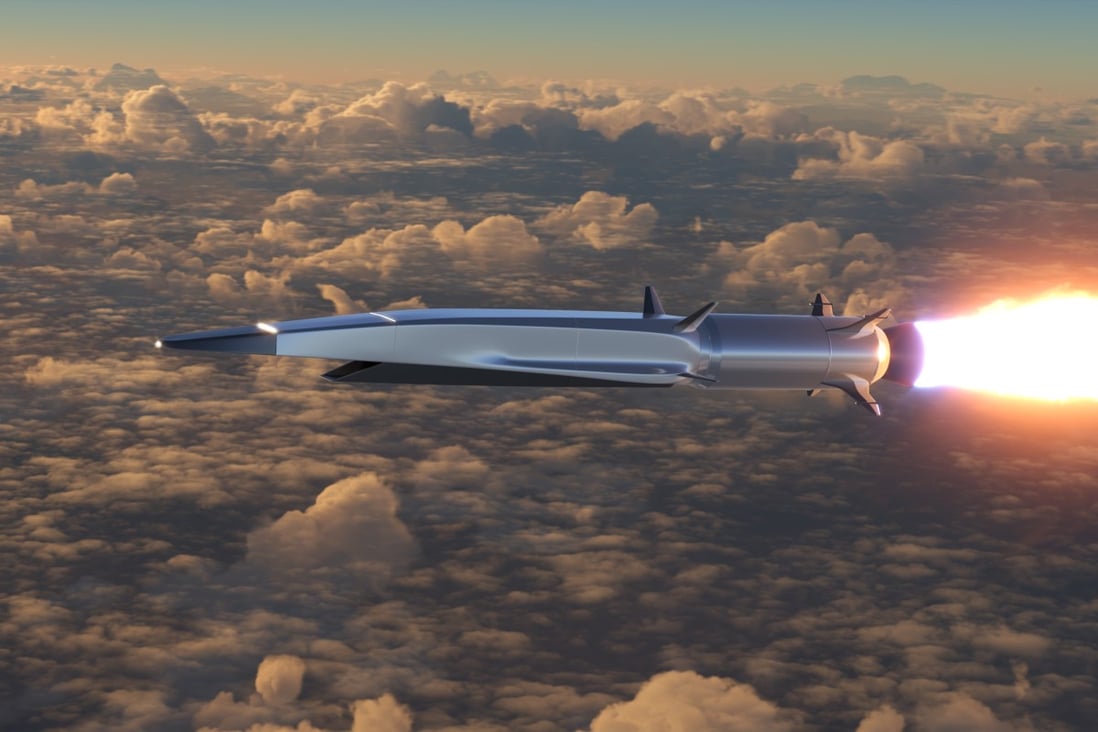While Beijing has repeatedly demonstrated its hypersonic offensive capabilities, it is now time for a ‘Chinese defense system’ against hypersonic missiles.
Chinese military researchers claim to have developed Artificial Intelligence (AI) technology that can predict the trajectory of a hypersonic glide missile as it approaches a target at speeds exceeding five times that of sound, South China Morning Post reported.
A rocket is used to launch a hypersonic glide vehicle to hit a target. The glide vehicle subsequently separates from the rocket and moves toward its target at a speed of at least Mach 5, or five times the speed of sound.
It is extremely difficult to track a hypersonic glide missile due to its unpredictable trajectory and the ability to enter space and re-enter the atmosphere in a very short period. Countries like the US are also relentlessly working on developing air missile defense against hypersonic missiles.

The Chinese researchers, however, seem to be several steps ahead of their American counterparts. According to them, a Chinese AI-powered air defense system can predict the potential kill trajectory of an incoming weapon and launch a swift counterattack with a three-minute advance time.
The typical missile stays within an 8-kilometer (5-mile) target zone, which is quite small for a weapon that can travel that distance in under two seconds.
“The world’s military powers are currently engaging in a fierce arms race around the development of hypersonic glide vehicles, bringing new and severe challenges to air and space safety,” said Zhang Junbiao, a computer scientist from the early warning intelligence department of the Air Force Early Warning Academy in Wuhan.
“Trajectory prediction is of great significance to combat intent assessment and aerospace defense interception,” wrote Zhang and his team in the Journal of Astronautics, a peer-reviewed publication run by the Chinese Society of Astronautics.
These Chinese claims come at the heel of a dedicated effort in the United States to build and test a hypersonic weapon system to match the capabilities of its adversaries, China and Russia.
Meanwhile, the US recently carried out a successful test of an Air-launched Rapid Response Weapon (ARRW) hypersonic missile, a few days after it had successfully tested its Hypersonic Air-Breathing Weapon Concept (HAWC).
Though efforts in the US are ongoing, there could be some time before a weapon is fielded. However, that has not deterred China’s quest to develop a defense against it in advance.
How Does AI Defend Against Hypersonic Missile?
A hypersonic glide weapon, unlike a normal ballistic missile, may move through the atmosphere like a stone skipping across water and bank to the left or right, making it more difficult to detect and intercept, according to SCMP.
At Mach 5 or higher speed, there is little time for an air defense system to respond to the threat, and it is widely assumed that current technology will be unable to intercept a hypersonic glide missile.
Zhang, on the other hand, believes Artificial Intelligence is capable of handling such unpredictable tasks and develops a defense against an unpredictable trajectory and incredibly high speed.
The defending side normally has no idea about the mass, size, shape, aerodynamic control system, or purpose of hostile weapons, but by analyzing observed flight data, the AI may make a fairly accurate assumption. According to the researchers, every move a missile makes will give off some modest but useful signals about its design, capabilities, and mission, regardless of how advanced or fast it is.

As a result, a machine learning system may learn from data collected during the early phases of a hypersonic flight and utilize that information to forecast the most likely trajectory during the flight’s later stages.
Zhang and his colleagues acknowledged that translating this idea into a working model was difficult. They claim that the raw data collected by an early warning system contains a lot of noise that might confuse AI and that too much data can also overload the computer.
To combat the problem of unwanted and overwhelming noise that could mislead the AI, the Chinese researchers devised a novel deep learning method that could automatically eliminate noise from observed signals. The algorithm similarly simulates the human brain’s activity by focusing just on the most recent, most important data to save calculation resources.
The new system can run on a laptop computer and produce a result in 15 seconds, according to the study, despite being more advanced than any previous AI for hypersonic trajectory prediction. Simulated experiments indicated that the system is still effective against a wide spectrum of weapons traveling at up to Mach 12 speeds.
Earlier in March, China’s Aerospace Defense industry had claimed that Beijing had made significant progress in building an AI (artificial intelligence) system that could even design new hypersonic weapons autonomously.

Double Whammy For The US?
As tensions continue to rise between the US and China in the Indo-Pacific region with an aggressive Beijing practicing dangerous military maneuvers, policymakers and military are alive to the challenges posed by the Chinese hypersonic missiles.
The US is currently reworking the defenses of its strategic assets in the Indo-Pacific against a Chinese offense. The EurAsian Times recently reported how the US was putting in place a dedicated layered missile defense system in Guam to protect its territory and valuable military assets against Chinese missile strikes in the event of hostility.
How the #US faces catastrophic defeat by #China or #Russia in a hypersonic Third World War
US is lagging in the 'hypersonic race' as rival superpowers develop game-changing weapons including AI 'drone swarms' and autonomous rocketshttps://t.co/FjwdZJ6lEz
— Indo-Pacific News – Watching the CCP-China Threat (@IndoPac_Info) October 22, 2021
Chinese Researchers had earlier claimed that its hypersonic missile with advanced infrared homing capability would allow it to hunt down a stealth fighter like the F-22 and even a moving car on the street with precision.
Therefore, these advanced would be able to destroy a target in an adversarial country over super long distances with absolute precision.
If the Chinese claims are anything to go by, it’s double trouble for the US, which lags far behind China in the hypersonic weapons race. As of now, the US neither has an operational hypersonic missile nor a workable defense against hypersonic missiles. China, on the other hand, claims that it has both!
- Contact the author at sakshi.tiwari9555@gmail.com
- Follow EurAsian Times on Google News




